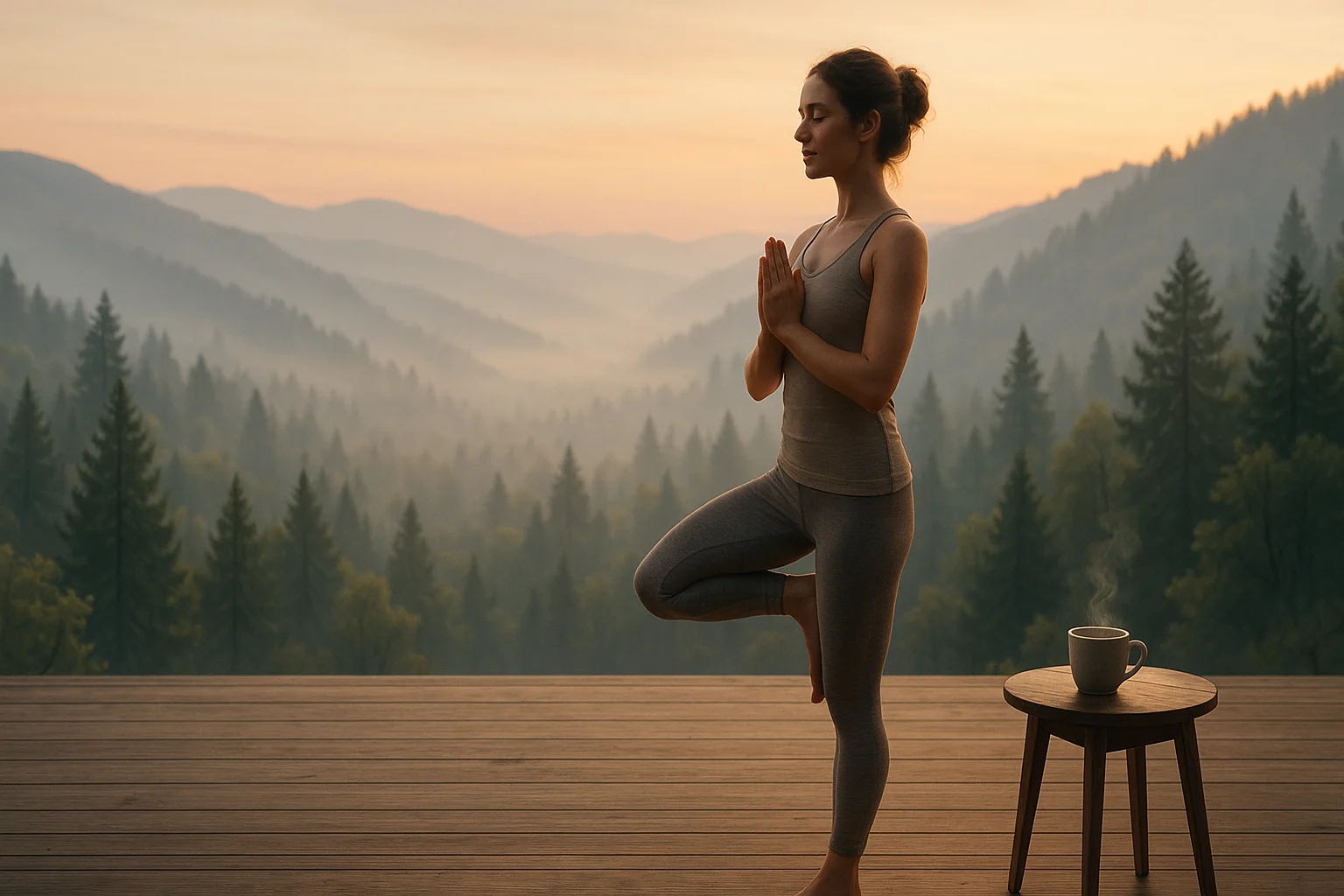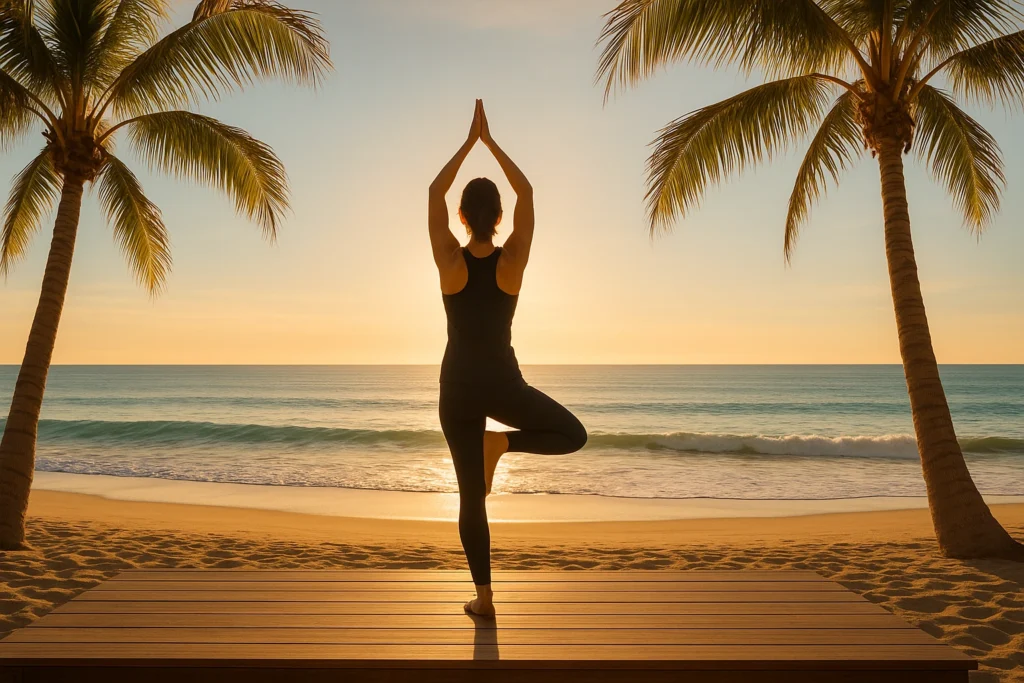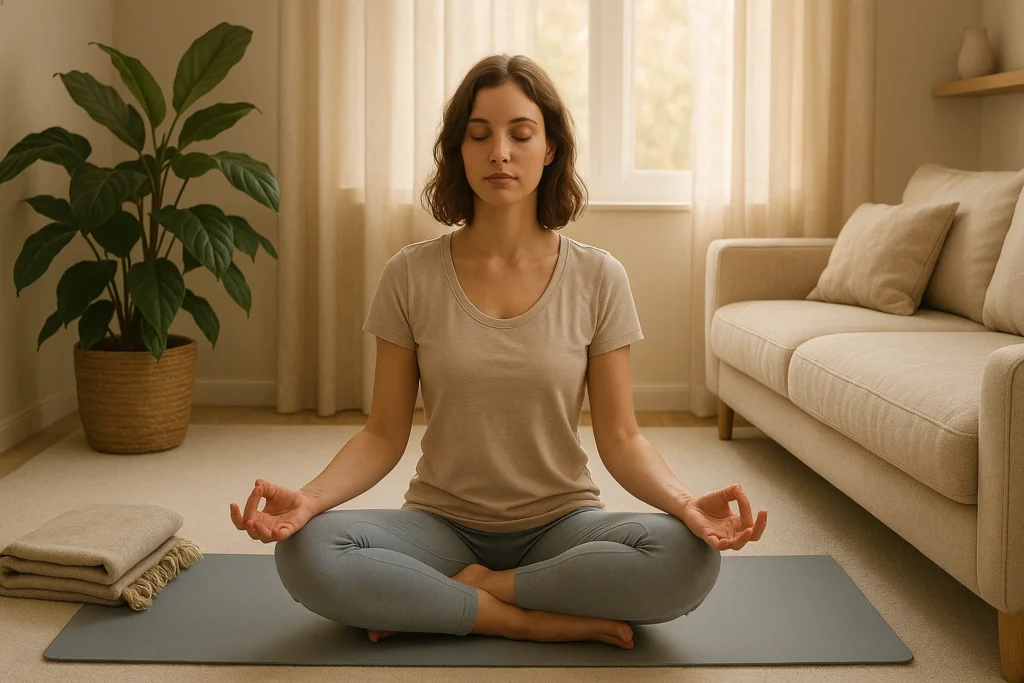
New to yoga retreats or feeling overwhelmed by options? This stress-free yoga retreat planning guide helps you find your dream escape. Imagine waking to ocean waves, fresh mountain air, or gentle birdsong—then rolling into a day of mindful movement, nourishing food, and deep relaxation. With so many choices, it helps to name your “why” first—then the rest falls into place. For the complete overview, see our yoga retreat guide.
This guide walks you through every step—from setting personal goals to choosing the right location, yoga style, and budget. Whether you’re a first-time yogi or a seasoned practitioner, you’ll get actionable tips to confidently book a retreat that’s just right for you. Ready to turn your travel plans into a soul-nourishing experience? Let’s dive in!
Plan Your Retreat Now!Table of Contents
- Define Your ‘Why’
- Pick a Location (Near or Far)
- Choosing the Right Yoga Style for Your Retreat
- Budgeting Wisely for Your Yoga Retreat
- Finding Comfortable Accommodations & Amenities
- Beyond-the-Mat Activities
- Researching & Booking Your Retreat
- Retreat Planning Tool
- Frequently Asked Questions
- Conclusion: Your Dream Retreat Awaits
This post has affiliate links. We may earn a commission. Learn more.
Step 1: Define Your ‘Why’
Before you scroll through dreamy destinations, pause for a breath and look inward. Ask yourself, “Why do I want to go on a yoga retreat?” Your answer will steer the plan. For example, Sarah—juggling school runs and a full-time job—picked a quiet weekend retreat to finally unplug and reset. Once you’ve named your “why,” the rest—location, style, and budget—gets easier.
Here are common motivations to consider:
- Deep Relaxation & Stress Relief: You’re burnt out and need to unplug. Prioritize gentle yoga, meditation, or spa treatments. Explore these yoga for stress relief techniques for simple, at-home resets.
- Skill Development: You want to master new poses or prepare for teacher training. Seek retreats with multiple classes and workshops.
- Wellness Focus: You want a gentle reset—think whole-food menus, real rest, and supportive therapies. If you’re eyeing juice-only days, check with a pro about what’s right for you.
- Adventure & Exploration: Pair your mat time with surfing, hiking, or a local food tour—whatever lights you up.
- Self-Discovery: Use mindfulness, journaling, or breathwork to get curious and go a layer deeper.
- Community: Meet like-minded people in a supportive group setting.
Once you clarify your intention, you can filter out retreats that don’t match. For instance, if relaxation is your goal, consider skipping intensive Ashtanga-focused retreats.
Step 2: Yoga Retreat Planning — Location Tips
Where you go shapes the whole week. Maybe it’s sunrise flows by the ocean, or quiet breathwork under tall pines. Choose the vibe that settles you, then shortlist places that fit.
Choose Yoga Retreat: Domestic vs. International
- Domestic (Close to Home): Travel’s simpler and jet lag is minimal—great for long weekends or first-timers. Think: a countryside center two to four hours from home.
- International (Far Away): Expect deeper immersion and fresh scenery (Bali’s temples, Costa Rica’s surf). The trade-off: longer flights and higher costs—check entry rules and transfers early.
Use distance, budget, and jet lag to help you choose yoga retreat options that match your energy and time off.
Climate and Environment Considerations
- Beach/Coastal: Great for sun-seekers and ocean lovers—warm weather and easy access to the water. 🌊
- Mountains/Forests: Crisp air, big views, and a grounded feel for nature lovers. ⛰️
- Desert: Stark beauty, unreal stargazing, and room to be quiet.
- Countryside: Rustic charm, farm-to-table meals, and a slower pace.
- Urban: Blend your practice with museums, markets, and city energy.
Navigating Cultural Differences
For international retreats, research local customs—like dress codes at temples or basic phrases—to feel confident. Platforms like BookYogaRetreats can help you find culturally immersive options while ensuring reputable organizers.
Step 3: Choosing the Right Yoga Style for Your Retreat
Styles land differently in your body. Some switch the lights on; others dial the noise down. Choose the one your nervous system is asking for. Can you picture flowing through Vinyasa or melting into Yin? Here’s a quick guide to match your style to your goals. If you’re considering advancing your practice, consider yoga teacher training if you want structured, long-term progress.
| Style | Intensity | Benefits | Best For |
|---|---|---|---|
| Hatha | Low | Foundational poses, breathwork, meditation | Beginners, relaxation |
| Vinyasa | Moderate-High | Dynamic flow, breath-to-movement | Energizing practice |
| Ashtanga | High | Vigorous, fixed sequence | Experienced yogis |
| Restorative | Low | Prop-supported, deep relaxation | Stress relief |
| Yin | Low | Long-held stretches, flexibility | Meditative calm |
| Kundalini | Moderate | Chanting, breathwork, energy work | Spiritual growth |
| Aerial | Moderate | Hammock-supported stretches | Playful exploration |
| Acro | High | Partner-based, strength-building | Community, adventure |
Pro Tip: Check the retreat’s description for experience levels. Some offer a mix of styles, letting you try something new without committing fully. For relaxation, go for Restorative or Yin; for a challenge, try Vinyasa or Ashtanga.

Step 4: Yoga Retreat Planning — Budget & Costs
Price ranges vary widely (e.g., roughly $300 for rustic weekends to $5,000+ for luxury weeks). Use these as ballpark examples rather than quotes.
What’s Included (and Excluded)?
- Included: Accommodation, yoga classes, most meals (often vegetarian/vegan), workshops, some activities, and sometimes airport transfers.
- Excluded: Flights, visas, travel insurance, extra activities (e.g., massages), personal spending, and tips.
Cost Tiers
- Budget ($$): Shared rooms, basic meals, yoga-focused. Great for no-frills escapes.
- Mid-Range ($$$): Private rooms, varied meals, more activities. Balances comfort and value.
- Luxury ($$$$): Exquisite villas, gourmet food, all-inclusive perks.
| Item | Estimated Cost (USD) | Notes |
|---|---|---|
| Retreat Package | $1,500–$2,500 | Includes accommodation, yoga, meals |
| Flights | $600–$1,200 | Varies by destination |
| Transfers | $50–$200 | If not included |
| Insurance | $50–$150 | Essential for peace of mind |
| Visa Fees | $0–$150 | Depends on destination |
| Extras | $100–$300 | Massages, excursions |
| Spending/Tips | $100–$200 | Souvenirs, drinks, gratuities |
| Total | $2,400–$4,700 | Example for mid-range retreat |
Step 5: Finding Comfortable Accommodations & Amenities
After a full day on the mat, a good bed matters—comfort helps you let go. Here’s what to look for.
Accommodation Types
- Shared Rooms: Budget-friendly and social; not ideal if you’re a light sleeper.
- Twin/Double: Share with one person—a balance of privacy and price.
- Private Rooms: En-suite bath, maximum comfort, higher price.
- Glamping/Eco-Lodges: Nature-forward stays with cozy tents or cabins.
- Luxury Villas: Premium amenities and big-view settings.
Key Amenities
- Yoga Shala: Look for indoor/outdoor space and plenty of props (mats, blocks).
- Meals: Confirm veg/vegan options and any dietary accommodations.
- Extras: Extras like pools, gardens, or a spa can help you settle.
- Connectivity: Decide whether you want Wi-Fi—or a true digital detox.
Sustainable Retreats
When planning wellness travel, consider eco-friendly retreats with sustainable practices, like solar power or locally sourced meals, to align with mindful travel values.
Planning Wellness Travel: Beyond the Mat — Activities & Experiences
A retreat is more than yoga—it’s a chance to explore new passions. Want to surf after Savasana or learn local recipes? Balance structured activities with free time for reflection. Some retreats add Ayurvedic wellness elements—think Abhyanga massage or gentle detox teas.
Wellness & Healing
- Massages (Thai, Ayurvedic), Reiki, or sound baths.
- Meditation, breathwork, or Ayurveda workshops.
- Some programs include juice-only days; consider your needs and talk with a clinician to see if that approach fits you.
Adventure & Nature
- Hiking, surfing, or kayaking.
- Wildlife viewing in jungles or reserves.
Cultural & Creative
- Cooking Classes: Learn local or healthy dishes.
- Local Excursions: Visit temples, markets, or historical sites.
- Creative Workshops: Try painting, pottery, or dance.
Researching & Booking Your Retreat
These yoga retreat tips can help you book with confidence.
Once you’ve narrowed your options, it’s time to dig deeper and book with confidence. Thorough research ensures your retreat lives up to your dreams.
Read Reviews
Scan Google/TripAdvisor/Instagram for patterns: how the food actually tastes, class intensity, room cleanliness, and how staff handled problems. Photos from guests (not just the venue) tell the truth fast.
Ask Questions
Contact organizers with queries like:
- What’s the daily schedule?
- Can you accommodate dietary needs?
- What’s the cancellation policy?
- Is there Wi-Fi or a digital detox focus?
Keep these yoga retreat tips nearby while you compare options.
Good signs include replies within 24–48 hours, a sample schedule or menu on request, clear transfer info, and a realistic teacher-to-student ratio.
Cancellation & Insurance
Read the refund policy—some retreats are strict. For international trips, consider travel insurance to cover cancellations or emergencies.
Personalized Options
Ask about private sessions or tailored meal plans to shape the week to you—especially helpful if you’re solo or have specific needs.
Retreat Planning Tool
Use this planning tool to explore tips for each step. Click a category to open it, then select a step for quick guidance!
Frequently Asked Questions
Our answers include author tips from real retreat experiences for extra insights.
Start by naming your goal (rest, growth, or adventure), then match a location, yoga style, and budget. Research reviews, confirm what’s included, and ask organizers about schedules and policies. Finally, book what feels aligned and allow space to rest between activities.
A great yoga retreat blends inspiring teachers, a serene location, and a schedule that matches your goals. Many travelers praise destinations like Bali for daily practice, healthy meals, and a supportive community. Look for clear descriptions and consistent reviews to gauge quality.
Start with a simple mix of yoga, meditation, and free time. Two daily sessions plus one optional workshop works well, and leaving afternoons open helps people recharge. Always align the agenda with participants’ goals—relaxation, exploration, or skill-building.
A common path: partner with a local studio for a weekend retreat, ensure the lead instructor is certified, secure a venue, and build a simple schedule. Promote on social media and platforms like BookYogaRetreats to attract attendees.
Choose a nature-focused venue, secure experienced instructors, and plan a budget-friendly program with group activities and vegetarian meals. Share schedules and expectations clearly with participants to keep everything running smoothly.
Conclusion: Your Dream Retreat Awaits
Plan it well now and the calm starts early. Sarah—juggling school runs and a full-time job—picked a quiet Bali week and returned feeling refreshed. Set your intention, shortlist locations and styles, budget with eyes open, and trust your read. That’s how a trip turns restorative. Namaste! 🙏


